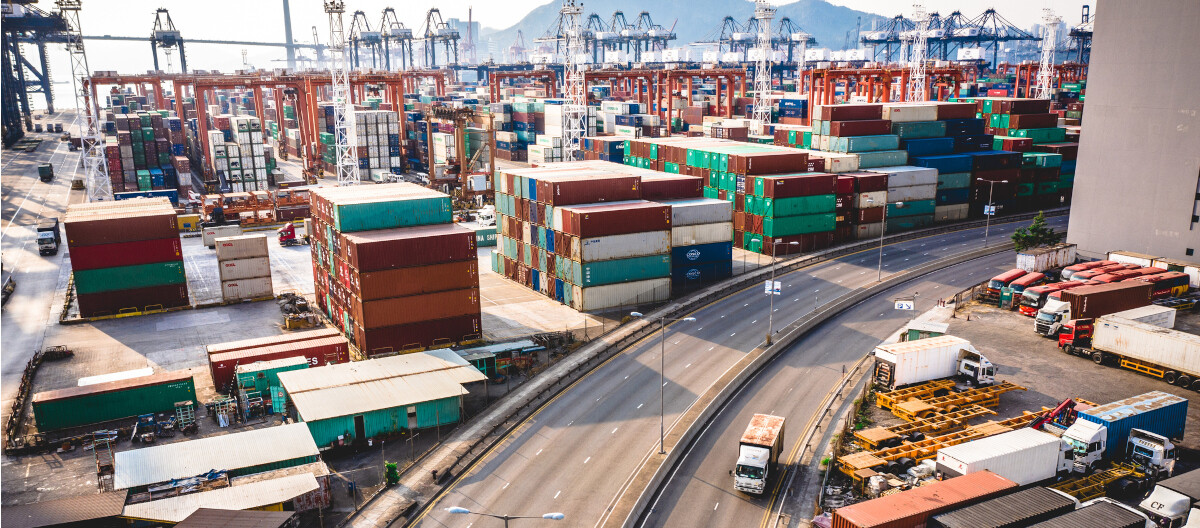Urban logistics: e-commerce is the key driver of the last mile concept
Digitalisation is substantially revolutionising supply chains. One aspect of this trend is urban logistics, with its focus on the last mile to customers, a concept which is steadily gaining ground in e-commerce. Here you can learn more about what urban logistics can achieve and how it transforms short-distance transport.
What is urban logistics?
Direct delivery to customers is a fundamental factor for e-commerce companies. This is the final step in the supply chain, from a distribution centre or location to the B2B or B2C end consumer. This stage is known as the ‘last mile’.
In cities and around metropolitan areas, it poses particular challenges in terms of storage and transport, due to the high volume of traffic. Urban logistics is the concept which addresses these issues.
Everything starts with the ‘last mile logistics depots’, generally characterised by the following features.
- Good access to the local road network, both for incoming goods and onward transport
- Short distances to the end customer - maximum delivery time one hour
- Plenty of loading doors and a large depot
- Fast throughput of goods and commodities
These urban logistics units serve as a hub for loading vans and other vehicles which deliver to individual consumers. The buildings usually have T- or E-shaped floor plans.
Within the facilities, packages or pallets are transferred from larger to smaller vehicles, which can then access densely populated and congested urban areas. As a result, urban logistics spaces typically offer cross-docking, have little or no storage, and have a low land ratio with a large yard area where vans can park while awaiting loading. The significant growth of e-commerce is leading to an increasing demand for last mile space. This is confirmed, for example, in a study by Mileway, a provider of last mile logistics properties in Europe, published in March 2023. The survey included around 600 companies in the UK, Germany, France, the Netherlands and Sweden.
One result of the survey was particularly striking: more than three-quarters (77%) of the companies surveyed said they plan to expand the last mile space they lease – either by expanding, opening more locations, or both. This is significantly higher than the 60% cited by respondents in a previous survey in August 2021.
What are the advantages of urban logistics?
The principle of the last mile, if well implemented, can result in a competitive advantage. The key advantages of urban logistics include the following:
- Proximity to consumers allows businesses to process and deliver same-day orders, boosting customer satisfaction and trust.
- Returns and empties are easier to deal with on the return journey due to the short distances (paired transport).
- The location of warehouses in urban environments is viewed especially favourably by millennials. Their purchasing power and preference for online purchases make them an important target group, especially since they are also playing an increasingly important role as B2B customers.
- The delivery of goods over short distances can be carried out flexibly - even using alternative means of transport.
How does urban logistics affect transport?
A major advantage of the last mile concept is the short distances in urban or suburban environments: however, there is often a diverse and high volume of traffic in such areas. So larger, comparatively cumbersome HGVs are not necessarily the best choice. Smaller, more manoeuvrable vehicles, operating from city hub or micro-depot locations (collection or distribution centres for delivery, handling, interim storage and local distribution) are more effective here. These can include electric vans or cargo e-bikes.
This opens up opportunities for sustainable urban logistics, for example by reducing greenhouse gases, air pollutant and noise emissions. An optimally digitalised supply chain contributes significantly to sustainability, ensuring optimal schedules, routes and utilisation of vehicles on the last mile. This means that empty miles, and the resulting costs and emissions, are reduced to a minimum.
And there’s another plus point. Computer-assisted calculation makes it easier for companies to provide resource-saving, collective and cooperative last mile delivery, which until now has proven difficult.

